 W
WIntensive agriculture, also known as intensive farming and industrial agriculture, is a type of agriculture, both of crop plants and of animals, with higher levels of input and output per unit of agricultural land area. It is characterized by a low fallow ratio, higher use of inputs such as capital and labour, and higher crop yields per unit land area.
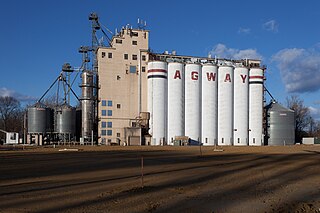 W
WAgway of DeWitt, New York, is an American agricultural business that offers feed for livestock and poultry, as well as seed, fertilizers, and herbicides.
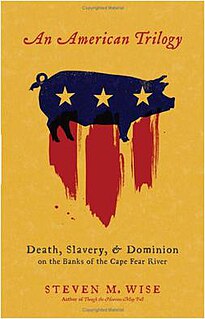 W
WAn American Trilogy: Death, Slavery, and Dominion on the Banks of the Cape Fear River is a 2009 is a non-fiction work by Steven M. Wise about the pig industry in North Carolina. Wise is an American legal scholar who specializes in animal protection.
 W
WAn animal product, also known as lacticinia, is any material derived from the body of an animal. Examples are fat, flesh, blood, milk, eggs, and lesser known products, such as isinglass and rennet.
 W
WAnimal transporters are used to transport livestock or non-livestock animals over long distances. They could be specially-modified vehicles, trailers, ships or aircraft containers. While some animal transporters like horse trailers only carry a few animals, modern ships engaged in live export can carry tens of thousands.
 W
WIntensive animal farming or industrial livestock production, also known by its opponents as factory farming, is a type of intensive agriculture, specifically an approach to animal husbandry designed to maximize production, while minimizing costs. To achieve this, agribusinesses keep livestock such as cattle, poultry, and fish at high stocking densities, at large scale, and using modern machinery, biotechnology, and global trade. The main products of this industry are meat, milk and eggs for human consumption. There are issues regarding whether intensive animal farming is sustainable or ethical.
 W
WChick culling or unwanted chick killing is the process of separating and killing of unwanted chicks, for which the intensive animal farming industry has no use. It occurs in all industrialised egg production whether free range, organic, or battery cage. Worldwide, around 7 billion male chicks are culled per year in the egg industry. Because male chickens do not lay eggs and only those on breeding programmes are required to fertilise eggs, they are considered redundant to the egg-laying industries and are usually killed shortly after being sexed, which occurs just days after they are conceived or after they hatch. Some methods of culling that do not involve anaesthetics include: cervical dislocation, asphyxiation by carbon dioxide and maceration using a high-speed grinder. Maceration is the primary method in the United States.
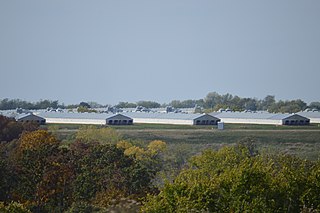 W
WIn animal husbandry, a concentrated animal feeding operation (CAFO), as defined by the United States Department of Agriculture (USDA), is an intensive animal feeding operation (AFO) in which over 1,000 animal units are confined for over 45 days a year. An animal unit is the equivalent of 1,000 pounds of "live" animal weight. A thousand animal units equates to 700 dairy cows, 1,000 meat cows, 2,500 pigs weighing more than 55 pounds (25 kg), 10,000 pigs weighing under 55 pounds, 10,000 sheep, 55,000 turkeys, 125,000 chickens, or 82,000 egg laying hens or pullets.
 W
WCorporate farming is the practice of large-scale agriculture on farms owned or greatly influenced by large companies. This includes corporate ownership of farms and selling of agricultural products, as well as the roles of these companies in influencing agricultural education, research, and public policy through funding initiatives and lobbying efforts.
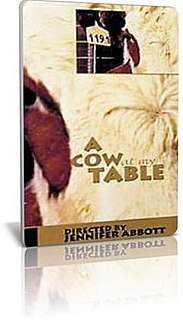 W
WA Cow at My Table is a 1998 documentary film examining Western attitudes towards farm animals and meat.
 W
WIntensive crop farming is a modern industrialized form of crop farming. Intensive crop farming's methods include innovation in agricultural machinery, farming methods, genetic engineering technology, techniques for achieving economies of scale in production, the creation of new markets for consumption, patent protection of genetic information, and global trade. These methods are widespread in developed nations.
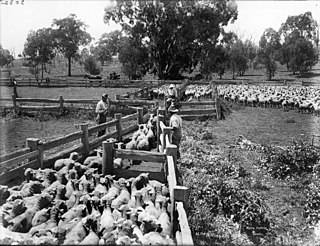 W
WIn biology, culling is the process of segregating organisms from a group according to desired or undesired characteristics. In animal breeding, it is the process of removing or segregating animals from a breeding stock based on specific trait. This is done to exaggerate desirable characteristics, or to remove undesirable characteristics by altering the genetic diversity of the population. For livestock and wildlife, culling often refers to the act of killing removed animals based on their individual characteristics, such as their sex or species membership, or as a means of preventing infectious disease transmission.
 W
WEating Animals is the third book by the American novelist Jonathan Safran Foer, published in 2009. A New York Times best-seller, Eating Animals provides a dense discussion of what it means to eat animals in an industrialized world. It was written in close collaboration with Farm Forward, a 501(c)(3) nonprofit organization that implements innovative strategies to promote conscientious food choices, reduce farmed animal suffering, and advance sustainable agriculture.
 W
WIn earth science, erosion is the action of surface processes that removes soil, rock, or dissolved material from one location on the Earth's crust, and then transports it to another location. Erosion is distinct from weathering which involves no movement. Removal of rock or soil as clastic sediment is referred to as physical or mechanical erosion; this contrasts with chemical erosion, where soil or rock material is removed from an area by dissolution. Eroded sediment or solutes may be transported just a few millimetres, or for thousands of kilometres.
 W
WFarmageddon: The True Cost of Cheap Meat is a 2014 non-fiction book by Philip Lymbery and Isabel Oakeshott. It surveys the effects of industrial livestock production and industrial fish farming around the world. The book is the result of Lymbery's investigations for which he travelled the world over three years. Isabel Oakeshott is the political editor of The Sunday Times, Philip Lymbery is CEO of Compassion in World Farming. The book was published by Bloomsbury.
 W
WA feedlot or feed yard is a type of animal feeding operation (AFO) which is used in intensive animal farming, notably beef cattle, but also swine, horses, sheep, turkeys, chickens or ducks, prior to slaughter. Large beef feedlots are called concentrated animal feeding operations (CAFO) in the United States and intensive livestock operations (ILOs) or confined feeding operations (CFO) in Canada. They may contain thousands of animals in an array of pens.
 W
WA fish hatchery is a place for artificial breeding, hatching, and rearing through the early life stages of animals—finfish and shellfish in particular. Hatcheries produce larval and juvenile fish, shellfish, and crustaceans, primarily to support the aquaculture industry where they are transferred to on-growing systems, such as fish farms, to reach harvest size. Some species that are commonly raised in hatcheries include Pacific oysters, shrimp, Indian prawns, salmon, tilapia and scallops. The value of global aquaculture production is estimated to be US$98.4 billion in 2008 with China significantly dominating the market; however, the value of aquaculture hatchery and nursery production has yet to be estimated. Additional hatchery production for small-scale domestic uses, which is particularly prevalent in South-East Asia or for conservation programmes, has also yet to be quantified.
 W
WFood irradiation is the process of exposing food and food packaging to ionizing radiation, such as from gamma rays, x-rays, or electron beams, without direct contact to the food product. When ionizing radiation passes through a food product, some energy is absorbed by some chemical bonds. Some bonds rupture and produce free radicals which are highly reactive and unstable. They instantaneously rejoin with neighboring compounds and the results are called radiolytic compounds. Food irradiation is used to improve food safety by extending product shelf life (preservation), reducing the risk of foodborne illness, delaying or eliminating sprouting or ripening, by sterilization of foods, and as a means of controlling insects and invasive pests. Food irradiation extends the shelf life of irradiated foods by effectively destroying organisms responsible for spoilage and foodborne illness and inhibiting sprouting. Consumer perception of foods treated with irradiation is more negative than those processed by other means. The U.S. Food and Drug Administration (FDA), the World Health Organization (WHO), the Centers for Disease Control and Prevention (CDC), and U.S. Department of Agriculture (USDA) have performed studies that confirm irradiation to be safe. In order for a food to be irradiated in the US, the FDA will still require that the specific food be thoroughly tested for irradiation safety.
 W
WFood, Inc. is a 2008 American documentary film directed by filmmaker Robert Kenner. The film examines corporate farming in the United States, concluding that agribusiness produces food that is unhealthy, in a way that is environmentally harmful and abusive of both animals and employees. The film is narrated by Michael Pollan and Eric Schlosser.
 W
WForced molting, sometimes known as induced molting, is the practice by some poultry industries of artificially provoking a flock to molt simultaneously, typically by withdrawing food for 7–14 days and sometimes also withdrawing water for an extended period. Forced molting is usually implemented when egg-production is naturally decreasing toward the end of the first egg-laying phase. During the forced molt, the birds cease producing eggs for at least two weeks, which allows the bird's reproductive tracts to regress and rejuvenate. After the molt, the hen's egg production rate usually peaks slightly lower than the previous peak, but egg quality is improved. The purpose of forced molting is therefore to increase egg production, egg quality, and profitability of flocks in their second or subsequent laying phases, by not allowing the hen's body the necessary time to rejuvenate during the natural cycle of feather replenishment.
 W
WThe Green Revolution, or the Third Agricultural Revolution, is the set of research technology transfer initiatives occurring between 1950 and the late 1960s, that increased agricultural production in parts of the world, beginning most markedly in the late 1960s. The initiatives resulted in the adoption of new technologies, including high-yielding varieties (HYVs) of cereals, especially dwarf wheat and rice. It was associated with chemical fertilizers, agrochemicals, and controlled water-supply and newer methods of cultivation, including mechanization. All of these together were seen as a 'package of practices' to supersede 'traditional' technology and to be adopted as a whole. The key elements of the revolution include: 1) Use of the latest technological and capital inputs, 2) adoption of modern scientific methods of farming, 3) use of high yielding varieties of seeds, 4) proper use of chemical fertilizers, 5) consolidation of land holdings.
 W
WThe Green Revolution was a period when agriculture in India was converted into an industrial system due to the adoption of modern methods and technology, such as the use of high yielding variety (HYV) seeds, tractors, irrigation facilities, pesticides, and fertilizers. Mainly led by agricultural scientist M. S. Swaminathan in India, this period was part of the larger Green revolution endeavor initiated by Nobel Laureate Dr Norman E Borlaug, which leveraged agricultural research and technology to increase agricultural productivity in the developing world.G.B.Pant University of Agriculture & Technology has played a pivotal role in ushering the Green Revolution in India by developing landmark varieties in wheat, rice, maize, pulses, oilseeds, forages, sugarcane and other crops.
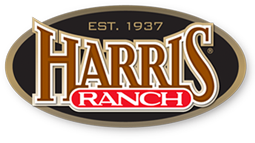 W
WHarris Ranch, or the Harris Cattle Ranch, feedlot is California's largest beef producer, producing 150 million pounds (68 kt) of beef per year in 2010. It is located alongside Interstate 5 at its intersection with State Route 198 east of Coalinga, in the San Joaquin Valley of central California. The ranch is owned by Harris Farms.
 W
WA hatchery is a facility where eggs are hatched under artificial conditions, especially those of fish, poultry or even turtles. It may be used for ex-situ conservation purposes, i.e. to breed rare or endangered species under controlled conditions; alternatively, it may be for economic reasons.
 W
WThe intensive agriculture of the province of Almeria, Spain, is a model of agricultural exploitation of high technical and economic yield based on the rational use of water, sanding, use of plastic greenhouses, high technical training and high level of employment of Inputs, on the peculiar characteristics of the environment. The greenhouses (invernaderos) are located between Motril and Almeria. Especially the area of El Ejido is well known to be an agricultural hotspot.
 W
WIntensive pig farming, also known as pig factory farming, is the primary method of pig production, in which grower pigs are housed indoors in group-housing or straw-lined sheds, whilst pregnant sows are housed in gestation crates or pens and give birth in farrowing crates.
 W
WLive export is the commercial transport of livestock across national borders. The trade involves a number of countries with the Australian live export industry being one of the largest exporters in the global trade. According to the Australian Bureau of Statistics, exports of live sheep rose 21.4% and live calves increased 9.7% between March 2017 and March 2018. During 2017 alone, Australia exported 2.85 million living animals in shipping containers and airplanes. The expansion of the trade has been supported by the introduction of purpose-built ships which carry large numbers of animals. The amount of livestock exported from the European Union grew to nearly 586m kilograms between 2014 and 2017, a 62.5% increase during the time period.
 W
WMechanised agriculture is the process of using agricultural machinery to mechanise the work of agriculture, greatly increasing farm worker productivity. In modern times, powered machinery has replaced many farm jobs formerly carried out by manual labour or by working animals such as oxen, horses and mules.
 W
WMechanically separated meat (MSM), mechanically recovered/reclaimed meat (MRM), or mechanically deboned meat (MDM) is a paste-like meat product produced by forcing pureed or ground beef, pork, mutton, turkey or chicken, under high pressure through a sieve or similar device to separate the bone from the edible meat tissue. It is sometimes called white slime as an analog to meat-additive pink slime and to meat extracted by advanced meat recovery systems, both of which are different processes. The process entails pureeing or grinding the carcass left after the manual removal of meat from the bones and then forcing the slurry through a sieve under pressure. This puree includes bone, bone marrow, skin, nerves, blood vessels, and the scraps of meat remaining on the bones. The resulting product is a blend primarily consisting of tissues not generally considered meat along with a much smaller amount of actual meat. In some countries such as the United States, these non-meat materials are processed separately for human and non-human uses and consumption. The process is controversial; Forbes, for example, called it a "not-so-appetizing meat production process".
 W
WMechanised agriculture is the process of using agricultural machinery to mechanise the work of agriculture, greatly increasing farm worker productivity. In modern times, powered machinery has replaced many farm jobs formerly carried out by manual labour or by working animals such as oxen, horses and mules.
 W
WA mixer-wagon, or diet feeder, is a specialist agricultural machine used for accurately weighing, mixing and distributing total mixed ration (TMR) for ruminant farm animals, in particular cattle and most commonly, dairy cattle.
 W
WModern Meat: Antibiotics, Hormones, and the Pharmaceutical Farm is a 1984 book by Orville Schell on intensive animal farming and antibiotic use in livestock.
 W
WMonoculture is the agricultural practice of growing a single crop, plant, or livestock species, variety, or breed in a field or farming system at a time. Polyculture, where more than one crop species is grown in the same space at the same time, is the alternative to monoculture. Monoculture is widely used both in intensive farming and in organic farming. It has allowed farmers to increase efficiency in planting, managing, and harvesting but it can also increase the risk of diseases or pest outbreaks.
 W
WNocton Dairies is a British company which was formed by Devon farmer and cheese-maker Peter Willes and Lancashire milk producer David Barnes in order to construct an 8,100-cow dairy at Nocton Heath in Lincolnshire, objectors to which claimed that it would have been the largest in Western Europe.
 W
WNuziveedu Seeds is an Indian agribusiness company which notably markets seeds. Nuziveedu Seeds Ltd, acknowledged as India ’s largest hybrid seed – company, believes that it has played an important role in Indian agriculture by developing and supplying quality hybrids and varietal seeds to millions of farmers. Nuziveedu Seeds, which was originally established as a part of NSL Group, has served Indian farmers for more than four decades. The company has its presence in 17 states and markets approximately 350 varieties of seed products to more than 5.5 million farmers across the country.
 W
WReactive nitrogen ("Nr") is a term used for a variety of nitrogen compounds that support growth directly or indirectly. Representative species include the gases nitrogen oxides (NOx), ammonia (NH3), nitrous oxide (N2O), as well as the anion nitrate (NO3−). Most of these species are the result of intensive farming, especially the (mis)use of fertilizers. Although required for life, nitrogen is stored in the biosphere in an unreactive ("unfixed") form N2, which supports only a few life forms. Reactive nitrogen is however "fixed" and is readily converted into protein, which supports life, leading to depletion of oxygen in fresh waters by eutrophication. Nr is removed from the biosphere via Denitrification.
 W
WSuKarne is a Mexican multinational corporation based in Culiacán, Mexico, that operates in the food protein industry. It is part of a family of companies under Grupo SuKarne.
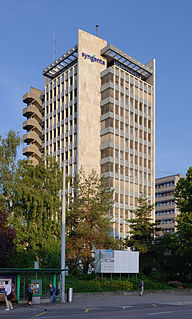 W
WThe Syngenta Group is a leading global provider of agricultural science and technology, in particular seeds and crop protection products, with its headquarters in Basel, Switzerland, and further locations in Chicago, Tel Aviv, and Shanghai. Syngenta AG was founded in 2000 by the merger of the agrichemical businesses of Novartis and AstraZeneca, and acquired by China National Chemical Corporation (ChemChina) in 2015. In 2020, the Syngenta Group was formed, bringing together Syngenta, Adama, and the agricultural business of Sinochem under a single entity.
 W
WTail biting in pigs is an abnormal behavior whereby a pig uses its teeth to bite, chew or orally manipulate another pigs's tail. Tail biting is used to describe a range in severity from light manipulation of the tail to physically harming the tail, causing infection, amputation or even harming areas surrounding the tail. Tail biting typically occurs under the following conditions: indoor facility with a high density of pigs housed in a confined area ; lack of a substrate material; poor ventilation system, or poor feed quality and accessibility.
 W
WThanet Earth is a large industrial agriculture and plant factory project consortium on the Isle of Thanet in Kent, England. It is the largest greenhouse complex in the UK, covering 90 hectares, or 220 acres (0.89 km2) of land. The glasshouses produce approximately 400 million tomatoes, 24 million peppers and 30 million cucumbers a year, equal to roughly 12, 11 and 8 per cent respectively of Britain’s entire annual production of those salad ingredients. Thanet Earth's main customers are Asda, Sainsbury’s, Tesco, M&S and agency HRGO
 W
WTotal mixed ration (TMR) is a method of feeding dairy cattle. The purpose of feeding a TMR diet is that each cow can consume the required level of nutrients in each bite. A cow's ration should include good quality forages, a balance of grains and proteins, vitamins and minerals.
 W
WTyson Foods, Inc. is an American multinational corporation based in Springdale, Arkansas, that operates in the food industry. The company is the world's second largest processor and marketer of chicken, beef, and pork after JBS S.A. and annually exports the largest percentage of beef out of the United States. Together with its subsidiaries, it operates major food brands, including Jimmy Dean, Hillshire Farm, Ball Park, Wright Brand, Aidells, and State Fair. Tyson Foods ranked No. 79 in the 2020 Fortune 500 list of the largest United States corporations by total revenue.
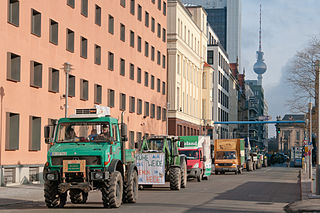 W
WWe are fed up! is the theme of a series of demonstrations in Germany against industrial livestock production and for more sustainable farming. The biggest demonstrations take place every year in Berlin since 2011 and attract up to 30,000 people. Around 120 different groups, which represent farmers, companies, and environmental rights and animal rights activists organize and sustain the demonstrations. The protests take place parallel to the Berlin International Green Week.
 W
WWH Group, formerly known as Shuanghui Group, is a publicly traded Chinese multinational meat and food processing company headquartered in Hong Kong. Sometimes also known as Shineway Group in English-speaking countries, the company's businesses include hog raising, consumer meat products, flavoring products, and logistics. It is the largest meat producer in China.